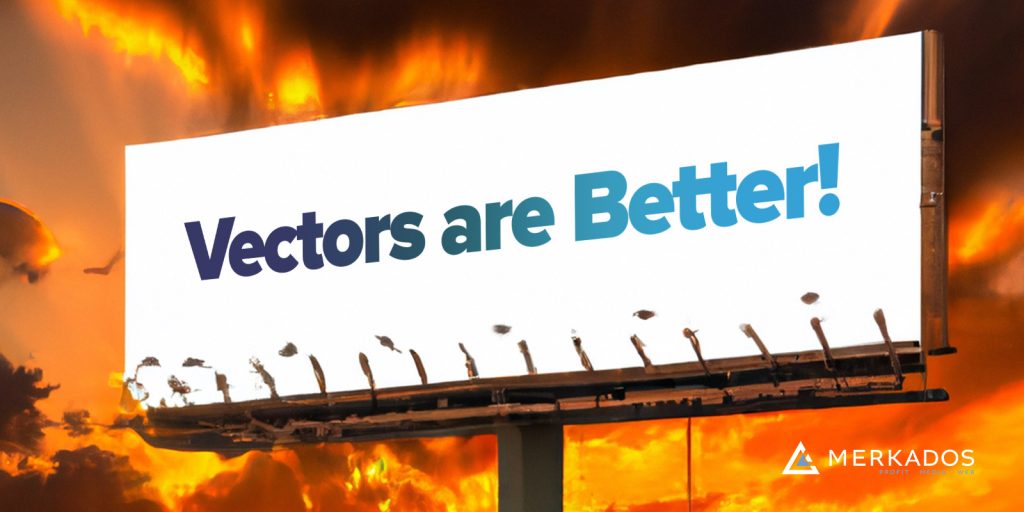When designing either digital or print media for your business, you may come across a question that feels like second nature to us digital media designers: What is the difference between a vector and a raster logo?
Raster Graphics
Raster graphics are made out of individual pixels. Each pixel is most likely defined in an RGB color space for digital media and in a CMYK color space for print media. However, there are times when you’ll find raster graphics are also used in film or video production, where a Rec709 color space or a Rec2020 HDR color space may also be used.
If you define an image that is 10 pixels wide by 10 pixels high, Then when you are trying to make that image be 10 times as big, what you would have to do is extrapolate the 10 pixels that you have. There are many methods for extrapolation, but in essence, your image is not going to retain its resolution because it is extrapolating information that really wasn’t there to begin with.
Raster graphics are great for photography and videography because they show gradients really well and they look really sharp if displayed at their native resolution.
Vector Graphics
Vector graphics are not made out of individual pixels. Instead, vector graphics are mathematical calculations of curves. They can have fills and strokes, and they may have blurs and shadows, but in general, they are not ideal for imagery that replicates real life.

Vector graphics use file types such as AI (Illustrator), EPS, and SVG. And they are widely used for graphics that can be presented at a varying resolution and size. For example, you may want to use your business logo for a business card today, but tomorrow you may want to use it for a billboard that is 18 feet by 12 feet. In both cases, you would want your logo to look equally sharp. Since vector graphics are mathematical calculations, when you enlarge them, they don’t lose resolution; they look equally sharp at all sizes.
When should you use raster graphics?
Digital media, in general, has very limited capabilities for displaying vector graphics. It is only recently that most modern web browsers are able to display vector SVG graphics. So, until recently, designing for the web was a raster graphics game.That is thankfully changing now, and you may use raster graphics for photographic material and vectors in SVG for logos and curves-based material.
Raster graphics are much better when used for captured media rather than designed media. In other words, if you used a camera or a sensor of some sort to capture the media, then it would probably be better represented as a raster graphic. If it is static, it is probably as a JPG, PNG, or TIFF file. If it is in motion, it is probably as an MOV or an MP4. On the other hand, if it is a graphic that is designed, such as an illustration, it will probably be best saved as a vector (but maybe even presented as a raster depending on the final channel). If your channel is ambiguous, your best bet is to save the file as a vector. That way, you can always easily convert the vector into raster without any loss of quality, if needed.
Final Thoughts
The most important thing to remember is that vector graphics can always be converted to raster graphics for a particular resolution, but not the other way around.
When you are designing a logotype for your business, remember to ask your designer for your logo in vector format. That way, you’ll be ready for any kind of project that you could have in mind, now and in the future. With a vector, you’ll have the opportunity to use it for small and big projects, both digitally and printed, static and in motion.
I hope that is helpful. If you are interested in learning how to take your digital media marketing to the next level for your business, contact Merkados today.
